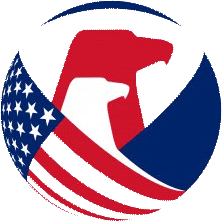Baby Changing Products
The regulation seeks to minimize injuries to children from normal use and reasonably foreseeable misuse or abuse of baby changing products. Specifically, the regulation attempts to minimize injuries and fatalities to children due to: (1) falls from changing tables, (2) failure of structural or mechanical components, (3) instability and entrapment in openings in the table structure, and (4) suffocation.
The regulation was originally published at 83 FR 29672 and codified at 16 C.F.R. part 1235. The regulation incorporates by reference ASTM F2388, and 16 C.F.R. § 1235.2 identifies the latest Commission-accepted version of ASTM F2388 that is mandatory as well as any modifications by CPSC.
Read-only copies of ASTM standards that are incorporated by reference can be viewed at ASTM’s electronic Reading Room.
More information is available at our baby changing products business guidance page.
The term “baby changing product,” as defined in ASTM F2388, includes:
- Changing Table: an elevated, freestanding structure generally designed to support and retain a child with a body weight of up to 30 lbs. (13.6 kg) in a horizontal position for the purpose of allowing a caregiver to change the child’s diaper. Changing tables may convert from or to other items of furniture, such as, but not limited to, a dresser, desk, hutch, bookshelf, or play yard, may have pull-out or drop-down changing surfaces, and they may provide storage for diapers and diaper products.
- Changing Table Accessory: an accessory that attaches to a crib or play yard designed to convert the product into a changing table, typically having a rigid frame with soft fabric or mesh sides or bottom surface, or both.
- Add-On Changing Unit: a rigid addition to or separate product used with an item of furniture that provides barriers to prevent the infant from rolling off the product during a diaper change.
- Contoured Changing Pad: a changing pad designed for use on an elevated surface that incorporates barriers to prevent a child from rolling off the changing surface and that often consists of synthetic-covered foam with contoured edges.
Only products defined as “baby changing products” are subject to this standard—flat, non-contoured changing mats that are typically included with a diaper bag, for example, are not covered under this definition, and therefore, are not subject to this standard.
The requirements for baby changing products per ASTM F2388 are as follows:
- General requirements
- Sharp points and edges – see also 16 C.F.R. §§ 1500.3(b)(4)(i)(D) and 1500.3(b)(15)(i)(A)
- Small parts – see also our small parts business guidance page
- Surface coatings – see also our lead in paint business guidance page
- Wood parts
- Openings
- Additional requirements for changing table accessories
- Toys – any toy accessories must meet the applicable requirements for children’s toys
- Threaded features
- Protective components
- Scissoring, shearing, and pinching
- Performance requirements
- Structural integrity
- Stability
- Barriers
- Retention of contoured changing pads and add-on changing units
- Entrapment in enclosed openings
- Entrapment by shelves
- Self-folding steps
- Restraint system
For details on the individual requirements, firms should review the latest Commission-accepted version of ASTM F2388 as referenced at 16 C.F.R. § 1235.2. Read-only copies of ASTM standards that are incorporated by reference can be viewed at ASTM’s electronic Reading Room.
Yes. There are general requirements for children’s products and durable infant or toddler products that apply:
- Small parts: Products intended for children under 3 years of age must not contain small parts or liberate small parts after use and abuse testing.
- Lead in paint and similar surface coatings: Children’s products must not bear paint and/or similar surface coatings that contain more than 0.009 percent (90 ppm) lead.
- Total lead content: Children’s products must not contain greater than 100 ppm (0.01 percent) of total lead content in any accessible component part.
- Third-party testing: Children’s products must be tested for compliance to applicable safety rules by a third-party, CPSC-accepted laboratory.
- Certification: Domestic manufacturers or importers of children’s products must generate a Children’s Product Certificate (CPC) certifying compliance to the applicable safety rules and ensures that a CPC accompanies the distribution of the product.
- Labeling: Children’s products must bear distinguishing, permanent marks on the product and any packaging (tracking label) that allow consumers to ascertain certain information. Durable infant or toddler products are required to have product markings in addition to the tracking label. This chart summarizes the specific labeling and registration requirements that durable infant and toddler products must meet.
- Registration form: Durable infant or toddler products must have a product registration form (also known as registration card) permanently attached to the product. There must also be an option to register via a website or, in the absence of a website, via email.

